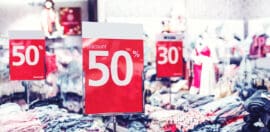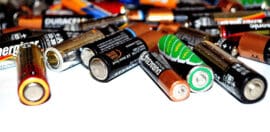For Kathmandu sustainability is a whole company affair

24 January 2022 at 5:11 pm
With a new CEO on board and two more brands under its roof, the outdoor adventure brand Kathmandu is setting itself up to become a global leader in ESG. We caught up with Robert Fry, general manager of product for Kathmandu, to find out exactly what that means.
Big Environmental, Social and Governance (ESG) goals for a business already passionate about sustainability are easy to make. Achieving those goals, however, can sometimes be a little bit harder to manage.
So when, in its most recent sustainability report, Kathmandu Holdings Group, the organisation incorporating outdoor adventure brands Kathmandu, Oboz and Rip Curl, wrote that the aim for the business was to be a global leader in ESG, we wanted to find out how it plans on doing it.
Robert Fry is the general manager of product for Kathmandu. We caught up with him to talk about how the business walks what it talks, the importance of B Corp certification and what it means to be a global leader in ESG.
How does Kathmandu approach the term “sustainability” from a business perspective?
We look at sustainability really broadly. Certainly, when it comes to environmental concerns it’s absolutely top of mind, whether it’s materials or something else in the product creation process. But at the same time, sustainability also encompasses our relationships with supply chains and with the most vulnerable workers in those supply chains – we regard that in the same breath as we do other forms of sustainability.
So, how do you approach monitoring the supply chains? Do you get out there and visit factories and see workers in person?
In a non-COVID situation, we’re constantly meeting with suppliers and doing our best to get into factories and see everything for ourselves. That’s mission-critical. We also have a couple of ESG partners that help us with standard level auditing as well as relationship-building with factories. We’ve recently brought on a full-time member of staff who’s based in Shenzhen, China, and so she works in the same time zone, and often the same language, with many of our vendors to discuss ESG or CSR related concerns, issues or activities.
The one thing that underscores all these activities is that we don’t take a business as usual (BAU) approach. There’s a lot of greenwashing that goes on in the industry and a lot of brands look at ESG as a box-ticking exercise and for us, it’s absolutely not.
When we have a hint that there might be some questions in a factory setting or with a supplier, we proactively reach out to them and say: “Hey, we’ve heard about these issues. We’re not going to punish you right away. What we’re going to do is work with you to improve.” We don’t think it’s fair, nor does it make sense, to just abandon every situation that could be fixed because that leaves those workers without an advocate. So if we can go in and essentially fix the situation for the worker, we’d much rather do that. Then we’re making progress.
In its 2021 sustainability report, Kathmandu stated that its aim is to become a global leader in ESG. What does it mean to be a global leader and what’s the plan to achieve that goal?
I think it’s all about innovating. We already do that from a product and commercial perspective and we want to expand that thinking to our approach to ESG.
We’ll obviously continue to rely on audits, and currently do up to 30 a year when business is running as usual, but we don’t think just doing audits is good enough. Audits are really just there to get the ball rolling, we want to keep proactively reaching out to those vendor partners in the supply chain that seem to be struggling and propose new ways of working to increase worker engagement and wellbeing.
We’re quite intimate with what’s going on in our factories and spend a great deal of time researching and investigating worker well being. We want to know how we can support the worker, whether it’s ways of approaching time off, ways of approaching daily breaks or how to approach staggered work hours. These are things that don’t affect factory productivity, but they certainly affect how people feel about their jobs.
Do the vendors you use work solely for Kathmandu? How do you choose the right factory to work with?
Very few major outdoor brands, or fashion brands for that matter, own their own factories — we all tend to work in partnership situations. If you have a really close relationship with a vendor then you might be 15 per cent of their business. So there are always lots of other brands coming and going. By making sure we’re looking after all the factory workers [no matter who they’re working for] we feel that we’re making sure that the bar is raised for all brands across the industry. If we go in and raise the bar for worker wellbeing then every other outdoor brand has to do the same.
For us, a big part of choosing a new vendor starts with how they are from an ESG perspective. If we’ve got an opportunity to improve because we’re moving to a different vendor then we will for sure, every single time. At the heart of Kathmandu lies our behaviour around sustainability, whether it’s our B Corp status or our ESG point of view that’s who we are. That’s built into our DNA.
2021 saw the business undertake its first ESG materiality assessment. Tell me a little bit more about that.
It was really about working out who we were as a brand, what was important to us and how we wanted to move forward. Over the course of 12 months, we worked with a consultancy based in Canada who took everyone through a set of deep-dive interviews into who the stakeholders of the business really are, and what’s important to them. They also looked into our stakeholder priorities and what that means for us as a brand – and this included the other brands in our portfolio (surf brand RipCurl and hiking brand Oboz). It took an objective outsider to help us assess at a very deep level what our purpose was. They then took all that data, looked at it very objectively and synthesised it into who we are authentically. And, thankfully, we learned that as a business we really care about what we stand for – our responsibility to the world.
Did the process flag any area of the business that needed tweaking?
You know, we’re in a moment of transition as a brand in that we’re identifying the things that we care most about. We’re still a for-profit business, we’re publicly listed and so we have fiduciary responsibilities to our stakeholders and shareholders that don’t go away depending on how we decide to feel about ourselves, but we’re working out who we want to be. When we look at the areas we want to work on, we see that there are certain ways of doing business that has forced us to be extremely promotional in certain periods of the year. And is that the best thing in the long term? Maybe not, and maybe there’s a different way to look at that. Maybe there’s a different way to look at our business. It’s not a switch you can flip overnight but it’s something that you can look at in the long term.
Does the brand work with other organisations to help support that shift in business thinking?
We engage with a lot of New Zealand based organisations, and we head up a monthly meeting with Deloitte where other brands and businesses drop in to talk about ESG and corporate responsibility. It works as an ongoing forum and we tend to look across industries so we can all find out what best practices exist out there in the world.
Which brands are coming along to these monthly meet-ups?
Mitre 10 and Countdown, which is a grocery store in New Zealand, come along and bring great ideas. New Zealand Post comes to the meetings, as do Bunnings Warehouse. Bunnings bring a great deal to the conversation, as do a lot of large scale vendors that do fast-moving consumer goods because they frequently have supply chain challenges. They also have to manage 10s of 1000s of employees and personnel in various distribution centres and stores and so a lot of the issues they bring to the table are being felt by other businesses, too.
And so what’s Kathmandu’s focus for the next 12 months from an ESG perspective?
When I joined the business, about 20 months ago, we said that every single season we wanted to have a groundbreaking sustainable material to bring to market – that’s four seasons a year. And we’ve been making good on that promise. We launched the world’s first biodegradable fleece jacket in February 2021, and we’ve got new versions of recycled materials that no one’s ever used before in stores right now. Plus, we’ve got a material launching soon that will be the first of its kind in the world.
That’s from a consumer perspective, from an internal perspective we’ll be formalising our new approach to ESG. We’re putting people, personnel and processes in place, which includes a specialised ESG team at a group level who will work across all three brands within our portfolio to harmonise all our ESG activity.
We’ll also be coming up for B Corp recertification, which will be at the group level not just for Kathmandu as a brand. So there’s a lot of work to make sure that Oboz and Rip Curl have all their ducks in a row. We want our B Corp certification to be at a company level.
What’s the thinking behind going for group B Corp accreditation?
We know that the industry is going this way, business can no longer be what it once was and instead has to look at how it can be a force for good – it has to evolve to meet society’s expectations. When we did all the work looking into the business as a whole, we realised just how much we all care about this stuff. Becoming a group-wide B Corp formalises things and shows our customers just how serious we are. It also gives us a structure by which to measure ourselves time and time again, you know, each time you go back for recertification it gets harder, right?
Tracking impact is so important as an impact-driven business, and B Corp. How does Kathmandu track the impact it has on both people and planet?
Well, the Higg Index has gotten significantly more robust and has new components that in the past we wouldn’t have necessarily relied on but we now feel like we can. We also use guidelines set by the Fair Labour Association that help us stay aware of best possible practices and standards for worker safety and worker well being – we tend to use those mechanisms as guardrails to help us check ourselves and keep us on track. And then there are lots of other organisations that we partner with to keep us mindful. We’ve got entire teams dedicated to this stuff and so it’s literally their daily jobs to make sure that we’re staying on track and to set the bar higher for us each quarter.







